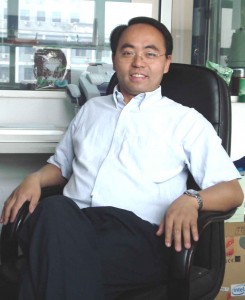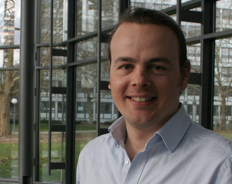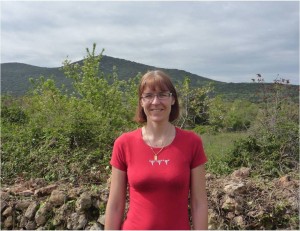
Chih Wei Chou received his bachelor’s degree in Medicinal Chemistry from the Chia Nan University of Pharmacy and Science in Taiwan in 2001, his MS degree in 2003 in Materials Engineering from Tatung University, and a PhD in Chemical Engineering from the National Chung Hsing University (NCHU) in 2006. From July 2004 to December 2004, he was also part of an exchange of research student with Prof. Hiroo Iwata at the Kyoto University in Japan. He joined the Department of Cosmeceutics at the China Medical University in Taiwan as an assistant professor in 2007. He received the Gold Medal Award of interdisciplinary scientific talent nurturing convergence plan from the Taiwan Ministry of Education in 2009 and 2010. His current research interests include the synthesis of nano/micron structures by biopolymers for the development of functional materials with sensing, imaging and biomedical device applications.
What was your inspiration in becoming a chemist?
I become a chemist because of three important reasons. First, our teachers in China Nan University of Pharmacy and Science always encouraged us to do some interesting pharmacy chemistry experiments, which fully inspired my curiosity. Second is undergraduate and graduate studies further underlay my background in polymer science. Finally, I am so lucky to meet two wonderful teachers (Professor Hong-Ru Lin and Professor Ko-Shao Chen) in China Nan University of Pharmacy and Science and Tatung University which opened me to a wonderful world: the polymer chemistry.
What was the motivation behind the research in your recent Polymer Chemistry paper (DOI: 10.1039/C2PY20972A) ?
Breast cancer (1.38 million new cases, 458, 400 deaths per year) and colon cancer (1.2 million, 608, 700 deaths per year) severely impact human lives and are among the most terrifying health problems. The cost and side effects of chemotherapy drug are other problems of patients. This was the motivation of our study. We try to find the way can decrease cost and side effects of chemotherapy drug. The nanoscopic size of this carrier system allows interactions with cellular membranes, subcellular organelles, passing through microvasculature, and may reduce immunogenicity by avoiding eticuloendothelial uptake. Modification of the nanocarrier surface with a hydrophilic polymer such as polyethylene glycol (PEG) can enhance these carrier system effects and result in longer systematic circulations, and subsequently deliver optimal chemo-drug concentrations to cancer cells. This study shows possible improvement or replacement of nowadays existing cancer diseases fighting methods by encapsulation of the pharmaceutically important herbal compound Berberine into a nanocarrier system that meets all the requirements of a drug delivery system. The importance and significance of this study may be established with the following:
· Mass production of the nanomedicine by a simple and cheap method
· High loading amount of the herbal compound
· Water solubility improvement of the herbal compound Berberine
· Bioavailability improvement of the Berberine in in vitro and in vivo systems
· High bioavailability of orally administered nanomedicine
Why did you choose Polymer Chemistry to publish your work?
Polymer Chemistry is an excellent journal with high quality and impact manuscripts in polymer science. Moreover, the review and publishing process of this journal is very fair and fast.
In which upcoming conferences may our readers meet you?
I will attend the 35th Annual International Conference of the IEEE Engineering in Medicine and Biology Society (EMBC’13) (3-7 July 2013), at the Osaka International Convention Center, in Osaka, Japan.
How do you spend your spare time?
I like travelling with my wife, playing with my cat, cooking and running when I have free time.
Which profession would you choose if you were not a scientist?
Good question. If I am not a scientist then Calligrapher is the best choice of another profession.
Cyrille Boyer is a guest web-writer for Polymer Chemistry. He is currently a Senior Lecturer and an ARC-Future Fellow at the Australian Centre for NanoMedicine and Center for Advanced Macromolecular Design (School of Chemical Engineering, University of New South Wales (Australia)).


















